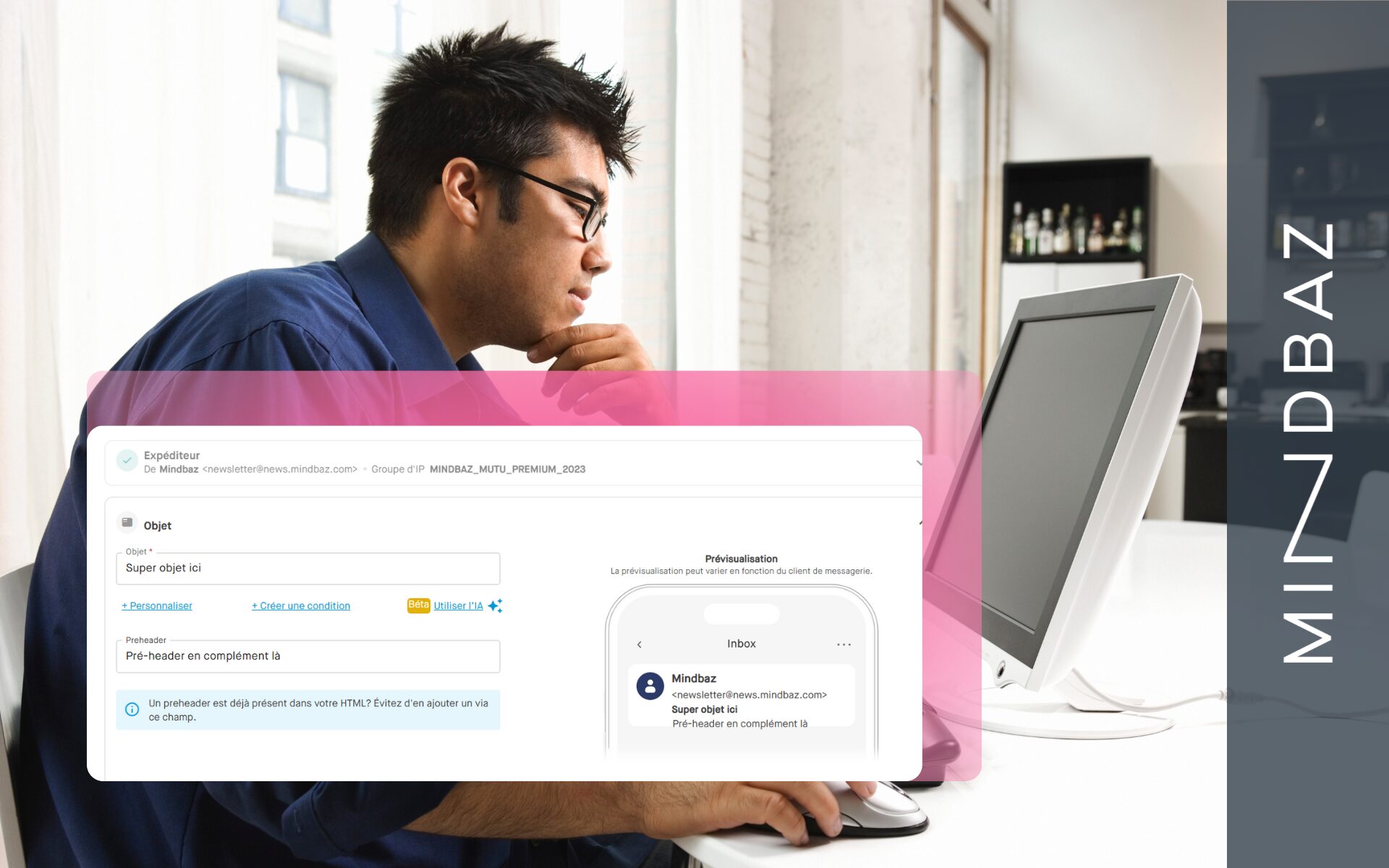This is the small text that appears just below the subject line in your contacts’ inbox.
The email preheader is often overlooked, yet it plays a crucial role in encouraging recipients to read your emails. A well-written preheader can improve the open rate and grab attention right from the inbox. Discover how to craft an effective preheader to boost your email marketing campaigns.
 Table of Contents
Table of Contents- Why is the email preheader essential?
- Key characteristics of a great preheader
- Best practices for writing an effective preheader
- Common mistakes to avoid
- Examples of high-performing preheaders
- In short: Writing a great preheader to increase email opens
Why is the email preheader essential?
The email preheader is the text displayed below (or just after, depending on the inbox provider) the subject line in the recipient's inbox. Lighter in color than the subject, it complements it and encourages the recipient to open the email. A well-crafted preheader can make a significant difference by directly influencing email engagement.
Key characteristics of a great preheader
- Concise: Ideally between 20 and 50 characters to avoid truncation.
- Relevant: It should align with the subject line and add value.
- Action-oriented: Uses an engaging tone directed at the recipient.
- Personalized: Including the recipient’s name or a targeted offer improves engagement.
- Avoids repetition: It should not be a duplicate of the subject line.
Best practices for writing an effective preheader
Here are some tips to optimize your preheader and improve your email open rate:
- Write it as a logical continuation of the subject line, adding more information.
- Use action-oriented verbs to encourage opens.
- Leverage curiosity or urgency to grab attention.
- Avoid "spam words" that might impact deliverability.
- Test different versions to identify what works best.
🔗 Email subject line: 12 tips for writing the first words your audience sees
Common mistakes to avoid
| Mistake | Explanation |
|---|---|
| Preheader too long | It may get cut off, reducing its impact. |
| Lack of relevance | If it doesn’t complement the subject line, it won’t add value. |
| Excessive use of capitals or emojis | Can seem aggressive or be flagged as spam. |
| Exact copy of the subject line | Provides no added value, diminishing impact. |
🔗 AI and email subject lines: Prompts to craft subject lines (and preheaders) that boost open rates!
Examples of high-performing preheaders
Here are some examples of preheaders that work well in email marketing:
- Subject: "A surprise awaits you!" - Preheader: "Discover your exclusive gift before tonight."
- Subject: "Need a boost for your email strategy?" - Preheader: "Our best tips to optimize your campaigns."
- Subject: "Exclusive offer just for you!" - Preheader: "Enjoy 20% off before midnight—don’t miss out."
Which email solution is best for media companies looking to monetize their content?
No time to read? Here’s a summary:
In short: Writing a great preheader to increase email opens
- The email preheader is crucial for boosting open rates and reinforcing an effective subject line.
- A good preheader is concise (40-100 characters), relevant, and engaging.
- It should complement the subject line without repeating it while encouraging action.
- Best practices include using action-oriented verbs, personalization, and email optimization.
- Avoid common mistakes: overly long text, lack of relevance, excessive use of capitals and emojis.
- Regular testing helps identify the most effective email copywriting.
